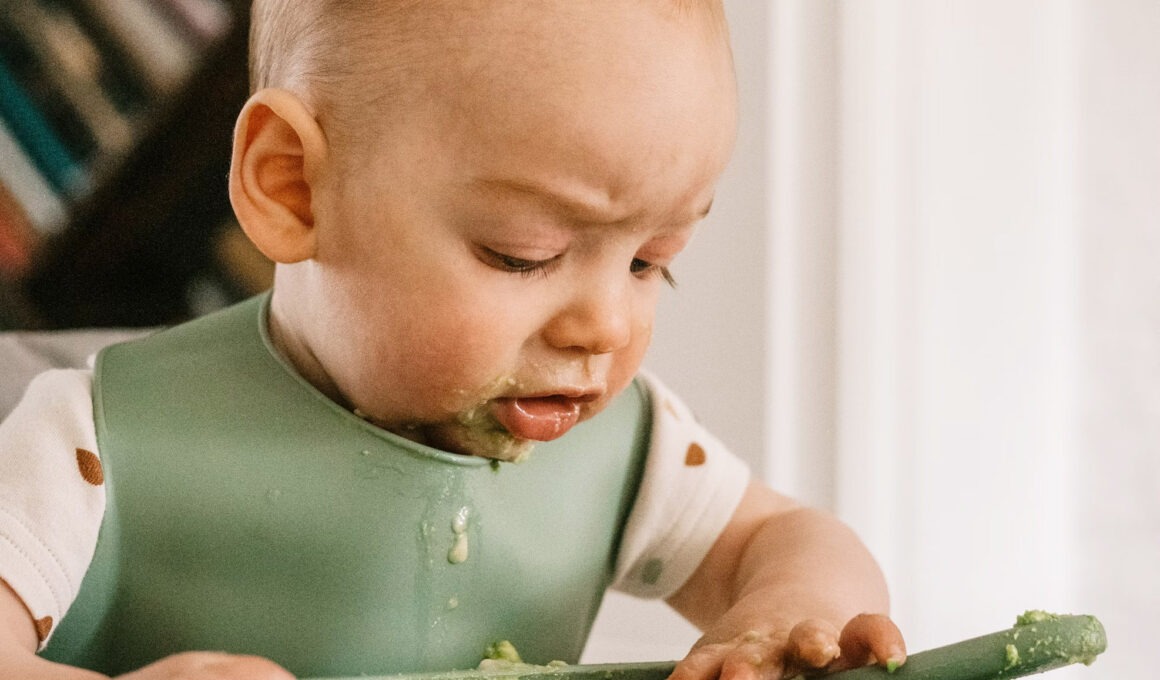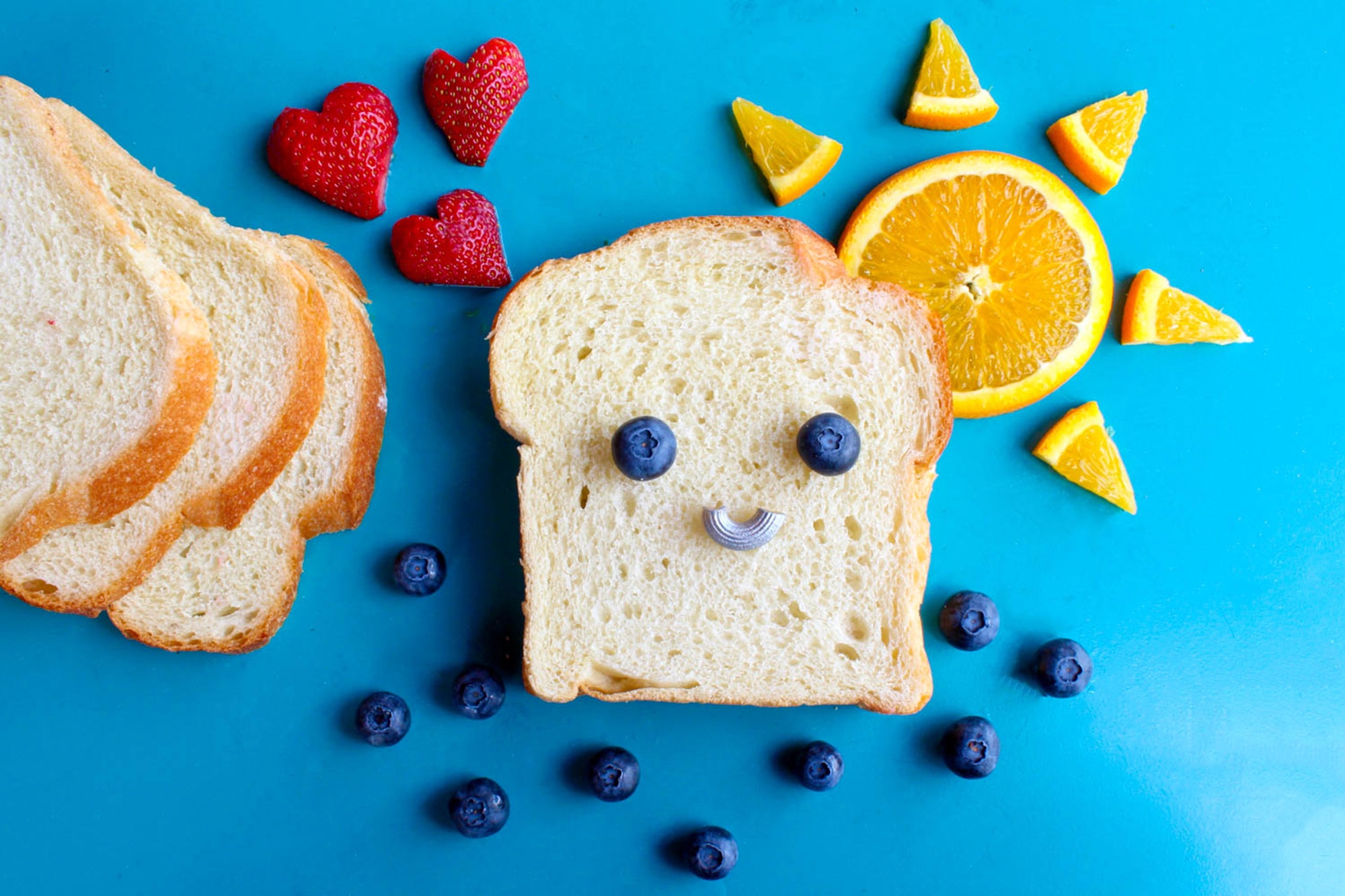Introducing solid foods to your baby marks a significant milestone in their development. Making the jump from breastmilk or formula to solid foods can be challenging for any new parent. You will struggle with figuring it out when to start solid foods, what to feed your baby, what to avoid, how to deal with “picky eating” and so much more.
This is a struggle that every parent faces, especially new parents. But, like everything about raising a baby, introducing solid foods is not a clear-cut science. They are guidelines but no rules. With the right suggestions, advice and tips, you can navigate this new period in your baby’s development with ease.
When To Introduce Solid Foods To Your Baby
One of the first things to consider when starting your baby’s solid food journey is whether your little one is ready. According to the American Academy of Pediatrics (AAP), your baby should exclusively feed on breastmilk (or formula) for the first 6 months of life.
Around the age of 4 to 6 months, most babies are ready to start solid foods. This does not mean that you should wean them off of breastmilk or formula. In fact, you should continue breastfeeding and/or formula for as long as you and your little one child are comfortable – for most parents this extends to the age of 2 years.
Some signs that can signal that your baby is ready to start solid foods include:
- Having good head control and being able to sit in a high chair or infant seat with their heads up.
- Being able to sit with little support.
- Opening their mouth or reaching for food can signal that your baby is ready for solids.
- Putting their hands or toys in their mouths.
- Indicate eagerness for food by leaning towards food.
- When they reach double their birth weight which typically occurs around 4 months of age.
- Being able to use their tongue to swallows instead of pushing food out of their mouth.
If you notice these signs in your baby, then you can start introducing solid foods to them. You should also consult with their pediatrician for good measure.
How To Introduce Solid Foods To Your Baby
The safest method to follow when introducing solid foods to your baby is by starting with “single ingredient” foods that are easy to digest.
Some “single ingredient” foods to try out are:
- Bananas
- Pureed steamed carrots
- Avocado
- Pureed meats
- Beans
- Iron-fortified baby cereals
- Sweet potatoes
Wait 3-5 days before introducing a new food to your baby. This is an excellent method to see if your baby has any allergies or reactions to a particular food. Moreover, this can reduce the chances of your baby being a picky eater.
On average, you should introduce a food to your baby 8-10 times before they can familiarize themselves with the taste and texture. Be gentle and persistent, but don’t be forceful. Remember that this is a brand new journey for your baby and it takes a lot of patience.
ALSO READ: 11 Expert Tips to Introduce New Foods To a Picky Baby
Which Solid Foods To Start With
The solid foods you introduce to your baby are entirely your choice. Some parents choose to make their own baby foods, other choose to buy premade baby food. With plenty of healthy options in stores, you already have a lot of variety and options. Don’t feel too pressured to do it all alone.
A few things to bear in mind when introducing solid foods to your baby are:
- Opt for purees or soft foods to prevent the possibility of choking.
- Begin by introducing “single ingredient” foods every 3-5 days. This helps your baby familiarize themselves with each flavor and also aids in detecting food allergies.
- Prioritize foods that provide zinc and iron.
- Select your premade baby cereal with care and ideally choose one that iron-fortified. You can mix it with breastmilk or formula for added nutrition (water is also fine).
Busting Solid Food Myths
There is a lot of speculation regarding food allergies and picky eating. You’d be surprised to know that a lot of those are just myths and aren’t grounded in science. For example,
- There is no evidence to suggest that your baby will dislike vegetables if you introduce fruits first.
- Waiting to introduce solid foods commonly associated with allergies such as eggs, fish, dairy, peanuts etc. at a later stage will not prevent allergies. The best solution is to test your baby for common food allergies.
- There is no specific order to follow when it comes to introducing solid foods to your baby.
Within a few months of starting solid foods, your baby’s daily diet should include a variety of foods from different food groups. This can include:
- Infant cereals
- Meat or other forms of proteins
- Vegetables
- Fruits
- Cheeses
- Grains
- Yogurts
Which Solid Foods To Avoid
Although parents are encouraged to introduce a wide variety of solid foods from different food groups, there are certain foods to avoid. Well, at least at the start.
Some of the biggest no-nos when it comes to solid foods for babies are:
- Cow’s Milk: Cow’s milk is not a great source of iron and it will not meet your baby’s iron needs. Opt for iron from animal or plant-based foods instead. This can look like chicken, beef, lamb, fish, nut butters, beans, etc. Remember that protein from animal sources is more easily absorbed by the body than plant-based proteins. If you’re feeding your baby plant-based proteins, remember to add foods rich in vitamin C to their diet too as it helps with iron absorption.
- Honey (before the first year): Honey before your baby is 1 year of age can cause a type of food poisoning called botulism. This occurs due to a type of bacteria present in honey called Clostridium. Infant botulism is dangerous and can cause muscle weakness and decreased muscle tone that contribute to weak crying, constipation and poor sucking.
- Choking Hazards: You should also pay close attention to avoid foods that can cause choking. Foods such as grapes, raw vegetables, fruit chunks, nuts, seeds, hard candy, and chunks of meat, marshmallows, and sticky foods that clumps together are all choking hazards.
- Potentially Allergenic Foods: This includes eggs, shellfish, peanuts, soy products, wheat, sesame, some cow’s milk products and nuts. It is best to consult your pediatrician to avoid any mishaps or food accidents that could potentially harm your baby.
ALSO READ: Dos and Don’ts for Baby’s First Foods
Solid Foods Feeding Tips
When you first start introducing solid foods to your baby, mashed, strained and pureed foods are the safest choice. Any solids you feed your baby must be super smooth in texture to avoid choking. In the beginning, your baby is still learning to use their oral muscles properly and even swallowing can be tricky for them. It is normal to experience gagging, spitting, or coughing.
However, as your baby grows older and they learn to swallow, swirl food around in their mouth, and eventually chew, you can begin introducing foods with a thicker and lumpier texture. Start with small mouthfuls to give your baby enough practice with solid food in their mouth.
Some tips that can help you with introducing solid foods include:
- Mashing and pureeing food until very smooth.
- Steaming hard fruits or vegetables so they can be easily mashed or pureed.
- Cooking food until it is very soft and can be easily mashed.
- Mixing cereals or mashed cooked grains with water, breastmilk or formula to make it easier for your baby to swallow.
- Once your baby is ready for thicker or chunkier foods, cut up their food into small pieces to avoid choking.
- Remove pits and seeds from fruits.
- Before cooking meat, fish, or poultry, remove all skin and fat.
- When introducing grains, cook and finely mash or grind to form a smooth texture.
Encourage Good Eating Habits Early
The process of eating solid foods for your baby begins from when they can sit up. This journey has many elements to it and isn’t restricted to food groups and varieties. It includes being able to take food from a spoon, swallowing, giving clear indication of hunger and fullness, taking breaks between bites and knowing when to stop.
From a parent’s perspective, introducing solid foods is more focused on the ingestion of foods other than breastmilk or formula. However, for your baby, it is so much more than just that. This is why it is important to encourage good eating habits from an early age.
Have Fun With Mealtimes
Making mealtimes a fun experience greatly enhances your baby’s food journey. You can talk to your baby, tell them stories, or even play games while feeding them. Using a high-chair also makes it easier for you and your baby to have mealtimes.
TIP: Pacing a sheet under your baby’s chair makes for easy cleanup especially if a mess happens.
Emphasize Family Meals
Although it might be challenging to make every one of your baby’s meal a family meal and have everyone present, it is a good practice to encourage family meals. Whenever possible, try and have the whole family eat together.
Scientists have found that having dinner together as a family on a regular basis contributes positively to children’s development.
Allow Your Baby To Explore
Play is a large part of every baby’s life. It helps them explore and learn about the world. The same applies to food as well. When your baby starts their solid foods journey, they will play with their food. This is just their way of experiencing the world.
Use Cutlery And Utensils
Give your baby a spoon even while you are feeding them. This helps them learn how to use cutlery and will also help you avoid dealing with them trying to snatch the spoon from your hands. It’s a good method to help them use their hands and also distract them from playing with the spoon you are using to feed them.
Using cups to feed your baby milk also helps wean them off breastfeeding or using a bottle. Around 9 months of age, your baby will typically be able to drink on their own using a cup.
Know When To Stop
Be mindful of when your baby is full. Look for indications or cues from your little one that they are full. Don’t force your baby to continue or stop eating. Pay attention to how your baby feels and acts to better understand when they are full.
Be Mindful Of Servings
When it comes to servings, both serving sizes as well as containers matter. Serving sizes allow for portion control and using containers instead of feeding your baby directly from a jar reduces chances of the remaining food from spoiling.
ALSO READ: Top Foods for Boosting Milk Production While Breastfeeding
Monitoring Your Baby’s Progress
As your baby’s solid foods journey continues, monitor their progress carefully. Watch out for reactions to certain foods. This includes rashes, vomiting, diarrhea or swelling. If you notice any of these symptoms, don’t hesitate to get in touch with a healthcare professional.
You should also encourage self-feeding. Introducing finger foods helps them become more independent in their feeding journey. It also promotes grasping and reflexes development. Don’t be afraid of a little mess. As your baby grows, they will slowly learn to not play with their food and focus on ingesting it.
Exploring solid foods can be a messy process but a little patience goes a long way. Think of it as the first steps, the foundation, or the building blocks of your baby’s path to healthy eating for the rest of their life.
Remember that there are no hard and fast rules that will make your baby’s transition to solid foods quicker or easier. Prioritize healthy foods from a variety of food groups. Focus on the nutritional value of the foods you are feeding your baby. And most importantly, pay attention to your child’s needs and cues.
Lastly, it is always better to be safe than sorry. Don’t hesitate to reach out to your doctor regarding any questions or concerns you have about your baby’s eating habits.
References: healthychildren.org, mayoclinic.org, nhs.uk, parents.com, babycenter.com, whattoexpect.com, hopkinsmedicine.org










